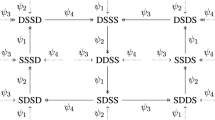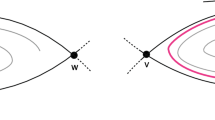Abstract
. We give an intrinsic definition of a heteroclinic network as a flow-invariant set that is indecomposable but not recurrent. Our definition covers many previously discussed examples of heteroclinic behavior. In addition, it provides a natural framework for discussing cycles between invariant sets more complicated than equilibria or limit cycles. We allow for cycles that connect chaotic sets (cycling chaos) or heteroclinic cycles (cycling cycles). Both phenomena can occur robustly in systems with symmetry.
We analyze the structure of a heteroclinic network as well as dynamics on and near the network. In particular, we introduce a notion of ‘depth’ for a heteroclinic network (simple cycles between equilibria have depth 1), characterize the connections and discuss issues of attraction, robustness and asymptotic behavior near a network.
We consider in detail a system of nine coupled cells where one can find a variety of complicated, yet robust, dynamics in simple polynomial vector fields that possess symmetries. For this model system, we find and prove the existence of depth‐2 networks involving connections between heteroclinic cycles and equilibria, and study bifurcations of such structures.
Similar content being viewed by others
Author information
Authors and Affiliations
Additional information
(Accepted July 6, 1998)
Rights and permissions
About this article
Cite this article
Ashwin, P., Field, M. Heteroclinic Networks in Coupled Cell Systems. Arch Rational Mech Anal 148, 107–143 (1999). https://doi.org/10.1007/s002050050158
Issue Date:
DOI: https://doi.org/10.1007/s002050050158




